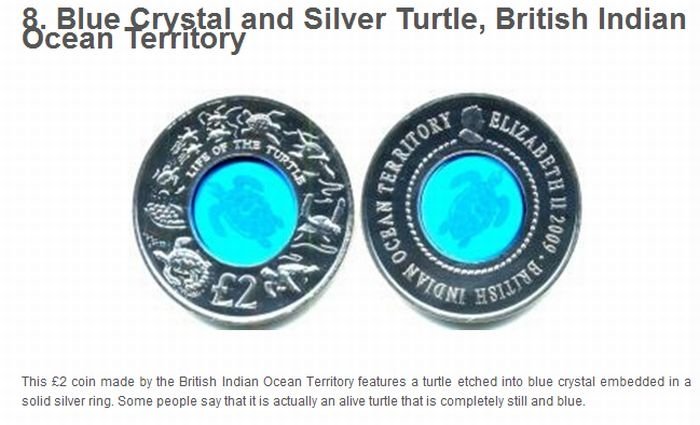|
|
Coins Around The World
|
The first Lydian coins were made of electrum, a naturally occurring alloy of silver and gold that was further alloyed with added silver and copper. Many early Lydian and Greek coins were undoubtedly minted under the authority of private individuals and are thus more akin to tokens or badges than true coins, though because of their numbers it's evident that some were official state issues, with King Alyattes of Lydia being a frequently mentioned originator of coinage.
Most of the early Lydian coins include no writing, called a "legend" or "inscription", only an image of a symbolic animal. Therefore the dating of these coins relies primarily on archeological evidence, with the most commonly cited evidence coming from excavations at the Temple of Artemis at Ephesus, also called the Ephesian Artemision (which would later evolve into one of the Seven Wonders of the Ancient World). The fact that the oldest lion head coins were discovered in that temple, and the fact that they were not used in commerce, strengths the scenario that these coins found there may have actually been badges or medals that were issued by the priests of the temple of Artemis, and the name of the person who received the badge or medal was inscribed on it. Artemis in Anatolia was named Potnia Theron, which is translated as "mistress of the animals", and her symbol was the lion and the tiger.
A small percentage of early Lydian Greek coins have a legend.
A famous early electrum coin, the most ancient inscribed coin at present known, is from nearby Caria, Asia Minor. This coin has a Greek legend reading "Phaenos emi sema" which can be translated either as "I am the badge of Phanes" or as "I am the sign of light" or maybe "I am the tomb of light" or "I am the tomb of Phanes". The celebrated coins of Phanes are known to be amongst the earliest of Greek coins, a hemihekte of the issue was found in the famous foundation deposit of the temple of Artemis at Ephesos (this deposit is considered the oldest deposit of electrum coins discovered). One assumption is that Phanes was a wealthy merchant, another that this coin is associated with Apollo-Phanes and, due to the Deer, with Artemis (twin sister of the god of light Apollo-Phaneos). Although only seven Phanes type coins were discovered, it is also notable that 20% of all early electrum coins also have the Lion (symbol of Artemis-Potnia Theron) and the sun burst (symbol of Apollo-Phaneos). Alternatively it is stated that the inscribed Phanes maybe was the Halicarnassian mercenary of Amasis, mentioned by Herodotus, who escaped to the court of Cambyses, and became his guide in the invasion of Egypt in the year B.C. 527 or 525. According to Herodotus, this Phanes was buried alive by a sandstorm, together with 50000 Persian soldiers, while trying to conquer the temple of Amun–Zeus in Egypt. The fact that the Greek word "Phanes" also means light (or lamp), and the word "sema" also means tomb, makes this coin a famous and controversial one.
|
|









